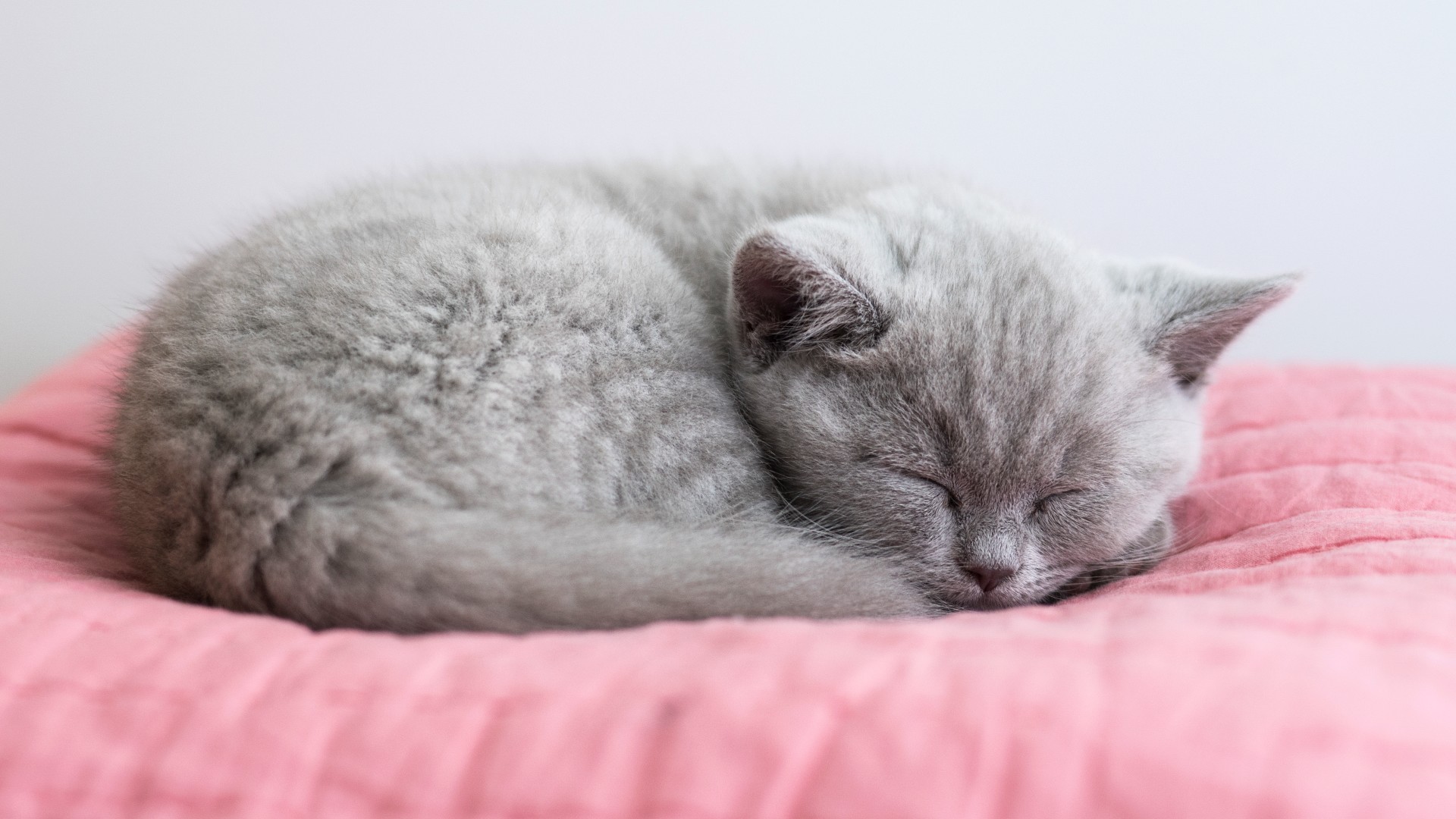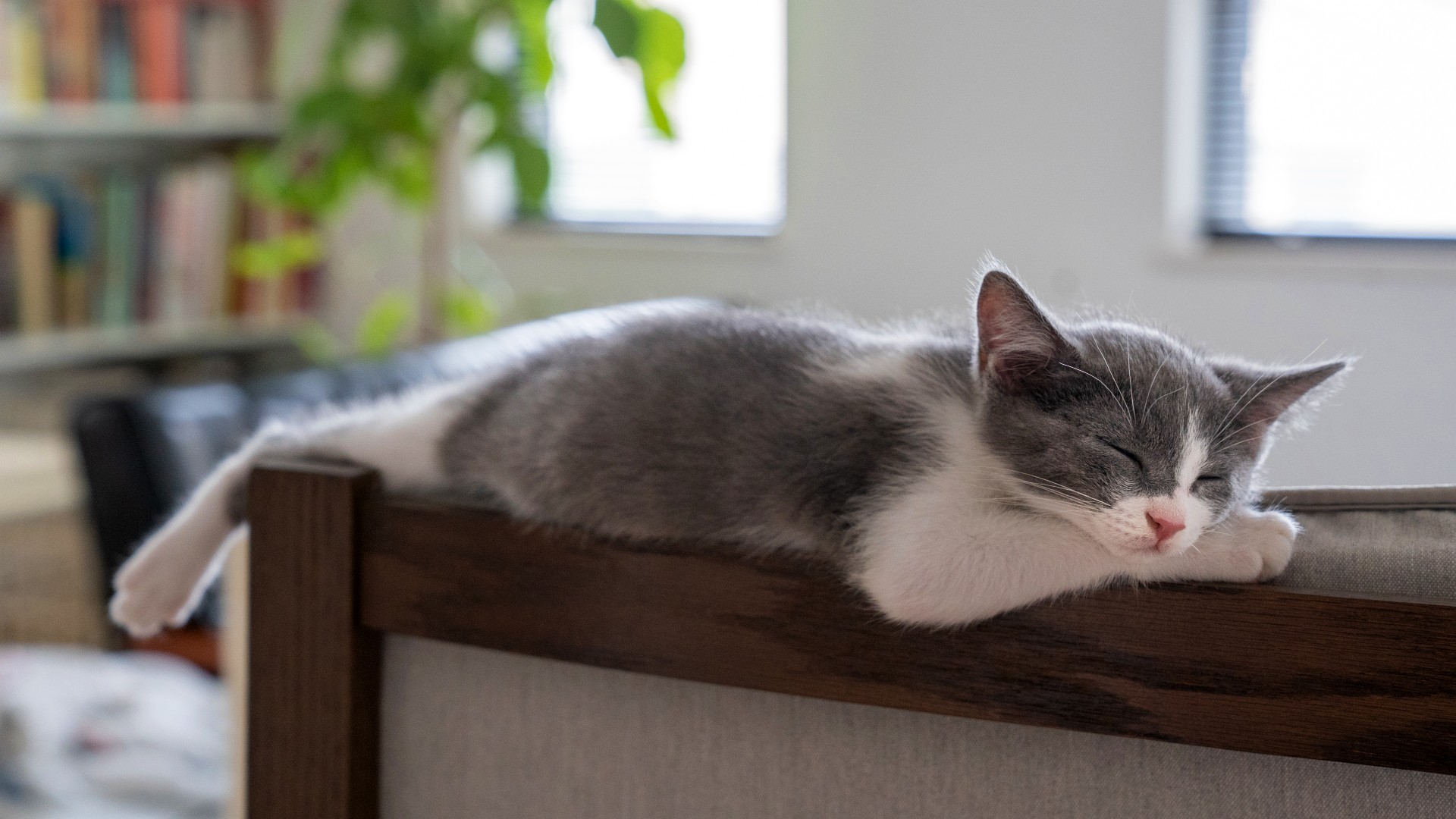Do cats dream? What do they dream about?
If you’ve ever noticed your cat twitching while they sleep, you’ve probably found yourself pondering the question ‘do cats dream?’ We reveal the answer!

Do cats dream? It’s a question that may have popped into your head on more than one occasion as you watched your feline friend twitch and move their paws about while they were slumbering happily away in their bed. And it turns out, the answer is yes!
Just like us humans, cats are often in dreamland when their eyes are closed, something that scientists have discovered through extensive research undertaken over the last 60 years. Dreaming is likely universal across all mammals, thanks to the similarity in our brain structures, but what we all dream about varies from species to species.
You’ve probably already guessed that when they’re curled up in the best cat bed that you purchased for them that your kitty isn’t dreaming about forgetting all their words during that important presentation at work or arguing with their sibling about whose turn it is to host the family for the holidays, but what goes on in their mind is still pretty darn interesting.
We take you through everything you need to know about the dream process, including what’s going on in your kitty’s brain when they’re snoozing, what they’re dreaming about and whether they have nightmares like we do.
Do cats dream?
Absolutely! But before we can start to decipher exactly what your kitty is dreaming about, it’s important to have an understanding of how dreams work. Basically, cats and humans experience the same types and stages of sleep, with dreams being more likely to occur at some stages than others.
Sleep falls into two categories: rapid eye movement sleep, known as REM, and non-rapid eye movement sleep. Dreams can occur in both these stages, but they’re far more likely during the REM stage, when we’re engaged in deep sleep.
What scientists have found is that dreams that occur during the non-REM phase of sleep tend to be short and focused on whatever has happened during the day. REM dreams, on the other hand, are often much longer and far more detailed.
Get the best advice, tips and top tech for your beloved Pets
If you notice your cat twitching while they’re curled up in their luxury cat bed or making certain movements with their paws or mouth, this is a really good sign that they’ve entered the REM stage of sleep and are in fact dreaming.
Cats exhibit all the same physiological and behavioral characteristics of dreaming that humans do, the only difference is that their sleep cycles are a lot shorter than ours with cats experiencing REM sleep every 25 minutes, compared with every 90 minutes in humans.
What do cats dream about?

While dreams can often appear jumbled and nonsensical, for both humans and cats, they serve an incredibly important function. Every day we’re exposed to a huge amount of stimuli, a great deal of information and many different experiences, dreaming is the brain's way of trying to process, and make sense of, everything that has happened.
So, what exactly is your cat dreaming about? Well, research into the dream life of rats may just hold the answer. In a 2002 study, Matthew Wilson, a professor of neuroscience at MIT, found that rats dream about what they do during the day, such as finding their way through a maze, and that cats are also likely to experience dreams that closely mirror their daily activities.
Dr. Nicholas H. Dodman, a professor of veterinary medicine at Tufts University, agrees with Wilson’s findings, explaining that cats are very likely replaying their day. “Like us, cats will probably dream about things that have gone on in the recent or distant past,” he says. “Maybe stalking a bird or mouse. Maybe being petted. Maybe an altercation with another cat or dog.”
It’s also highly likely that your feline friend spends a great deal of their sleepy time dreaming about you. If you spend a lot of time playing together, if your cat likes to curl up on your lap, if you pet them a lot and if you spend time grooming them, all of these things are likely to reappear in their dreams. Dr. Verna Serra, a vet who works for the Veterinary Emergency Group, agrees.
"Most likely they have dreams of hunting and playing," she says, "as well as cuddling and loving their housemates and human companions. They may be dreaming about their favorite toys, a smelly meal, sharpening their nails on a couch, or being petted. They likely dream about a variety of things, just like we do."
But while the vast majority of your feline friend’s dreams are filled with happy things, there are moments where all might not be rosy in dreamland.
Do cats have nightmares?
Given that our brain structures are so similar and that we experience the same types and stages of sleep, it probably goes without saying that the fact that humans can experience nightmares means our little furry friends can too.
Where we differ is in the kinds of nightmares that we have. For humans, it’s not uncommon for our nightmares to take the form of being chased by a menacing figure, coming close to death in some way, experiencing financial troubles, or finding ourselves caught up in a natural disaster or global crisis.
In the same way that humans process stress and trauma while they’re dreaming, cats will do the same. Because our feline friends can’t keep a dream journal or talk to us about their dreams, we’re left to guess as to what their nightmares might be made up of, but it’s likely things that felt scary to them during the day, like being chased by a dog.
If your cat shows signs of distress while they’re asleep, such as swiping the air with their claws out, crying out or just generally appearing restless, there’s a good chance they’re having a nightmare as opposed to a pleasant dream.
While it can be upsetting to watch, it’s important that you don’t wake your cat as this will cause several seconds of disorientation, which could lead to you being scratched or bitten. The best thing you can do is stay close by and offer gentle reassurance as your cat begins to wake up.

Kathryn is a freelance writer who has been a member of the PetsRadar family since it launched in 2020. Highly experienced in her field, she's driven by a desire to provide pet parents with accurate, timely, and informative content that enables them to provide their fur friends with everything they need to thrive.
Kathryn works closely with vets and trainers to ensure all articles offer the most up-to-date information across a range of pet-related fields, from insights into health and behavior issues to tips on products and training.
When she’s not busy crafting the perfect sentence for her features, buying guides and news pieces, she can be found hanging out with her family (which includes one super sassy cat and a kitten), drinking copious amounts of Jasmine tea and reading all the books.
She has written for a range of publications, including Fit&Well, Top Ten Reviews, LiveScience, Goodto, and Product Hunt.
